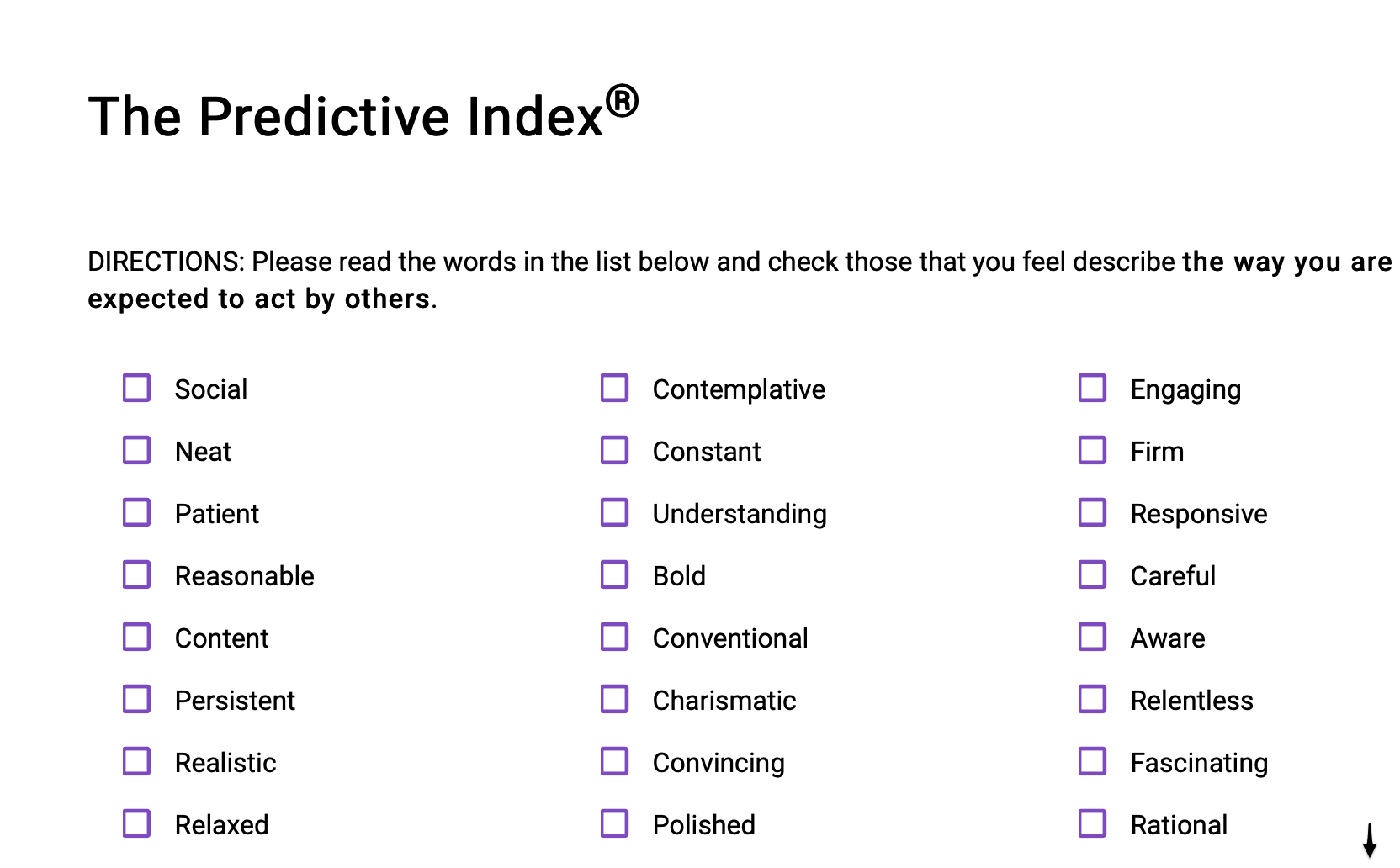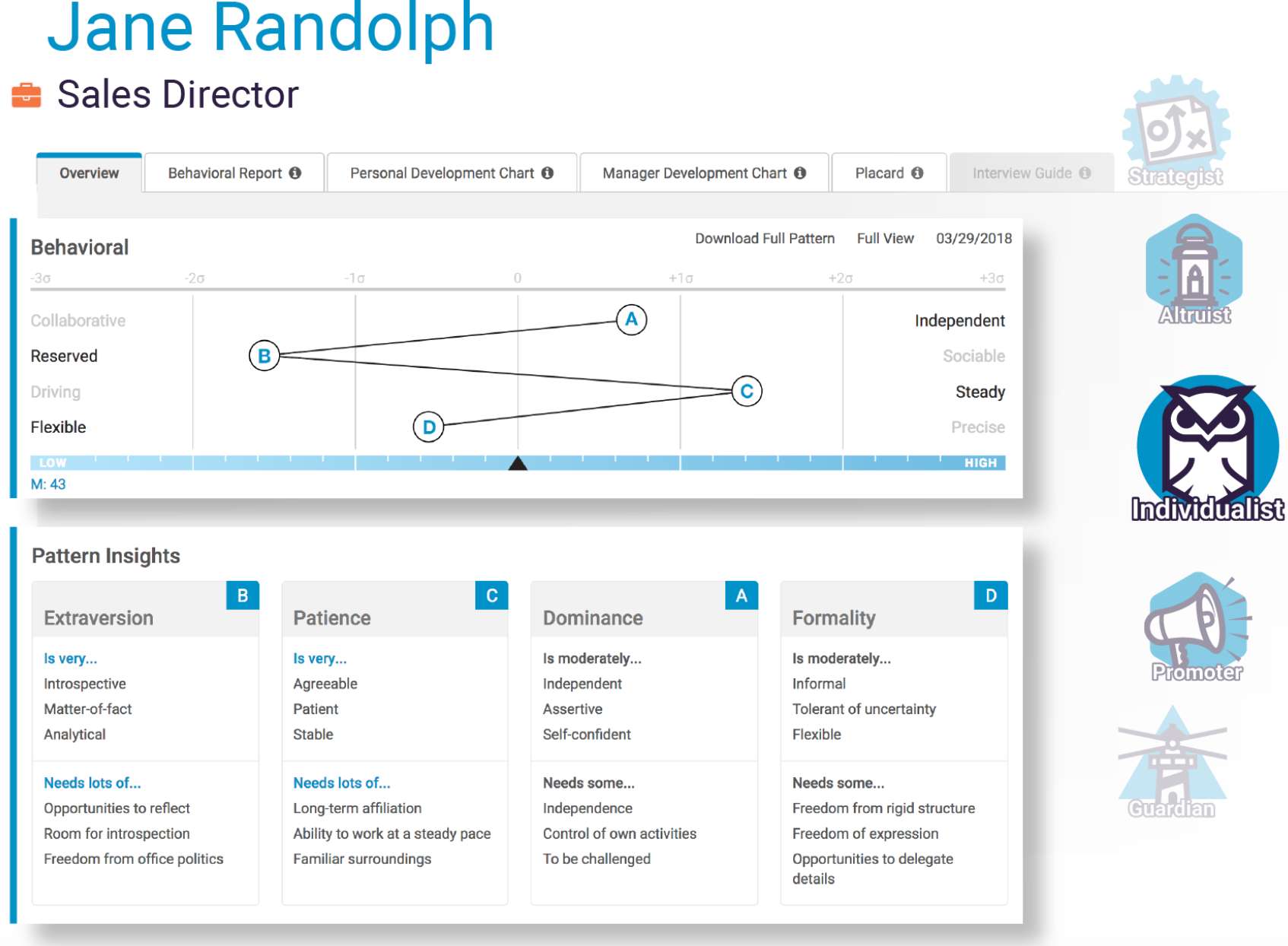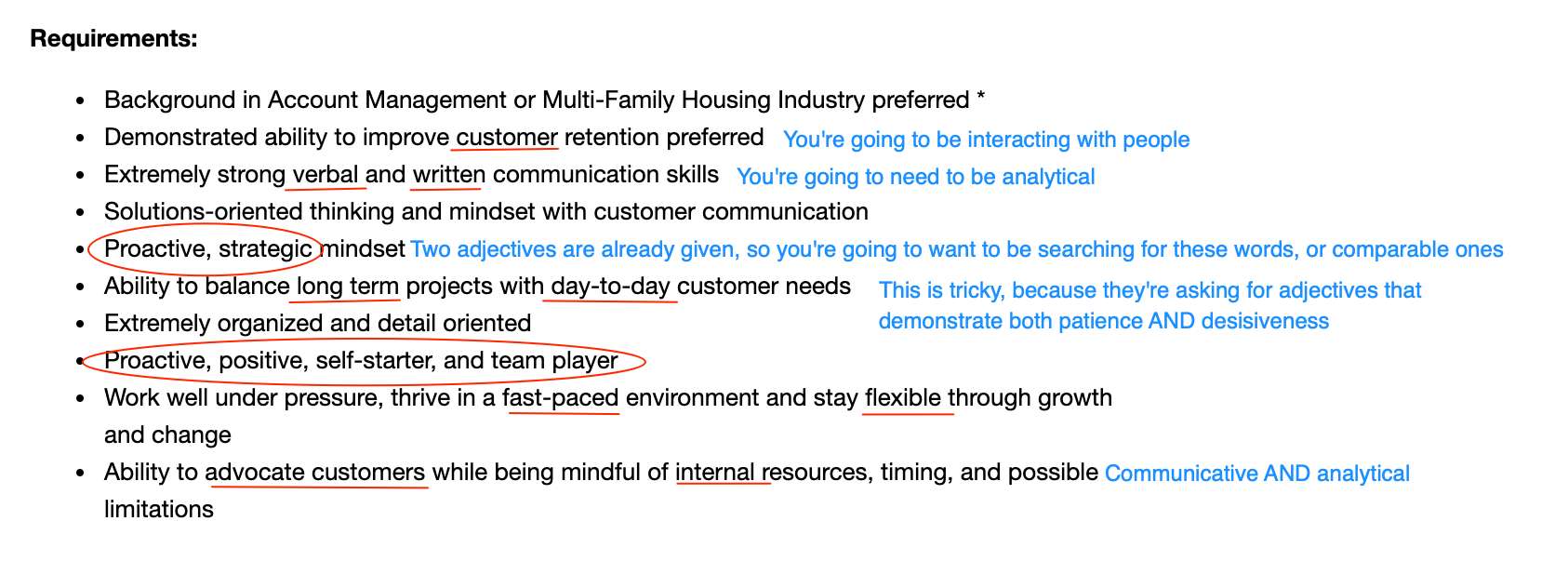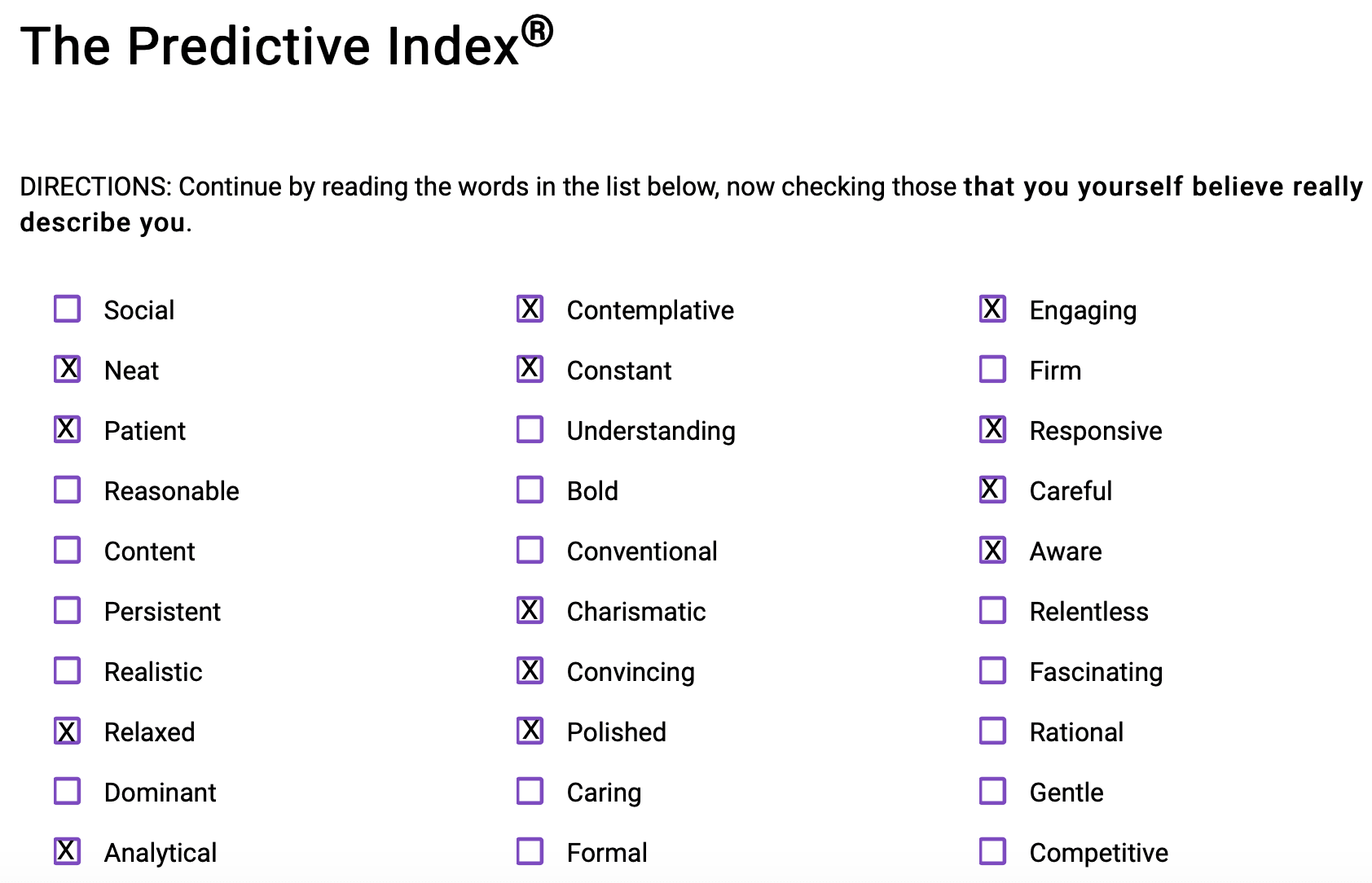
If you’ve been on the job hunt, you may have come across certain personality tests that give an employer a more in-depth look at who you are as a person. In this article, we will teach you how to get the score you want on a Predictive Index (PI) Behavioral Assessment. In addition, we will also explore what the PI Behavioral Assessment measures and the reason companies choose to administer it. We will identify how the PI breaks down your personality using four traits (dominance, extraversion, patience, and formality) and learn about the 17 “Reference Profiles” you can be placed in, based on those traits.
To maximize your chances of looking good on this assessment, we recommend that you study up for the Predictive Index test. We highly recommend Job Test Prep PI Behavioral Assessment prep pack. What we like is you get a full study guide and personality test simulations to get you ready. You get all of this with a money-back guarantee. Check them out if you feel you need more help preparing.
Before we dive into what it takes to pass the Predictive Index (PI), we should start by learning a little more about it.
The PI Assessment is not pass/fail, which means there are no right or wrong answers. However, one's answers could be more favorable than another’s depending on the position for which they are applying. The assessment is one factor among many others like your resume, interview, and references, so there’s really no need to fret. However, if everything else is equal, an employer would select a candidate with a more fitting PI result based on the position in question.
The PI assessment is two pages and takes about 10 minutes to complete. There are 86 adjectives on both pages of the test, and you are asked to check off a list of adjectives that (on the first page) you feel describe the way you are expected to act by others, and (on the second page) you feel you yourself believe really describe you. There are two components at work here. The first page is measuring your self-expectation component, while the second page is measuring your self-concept.

The assessment, which is taken by about 2.5 million people a year, is a very friendly test to take. Other personality assessments come in the form of repetitive multiple-choice questions and can take hours to complete. So if you’re getting ready to take one, be thankful that you got the Predictive Index.
The first page of the assessment will show how you might be adapting your natural behaviors to the expectations of your work environment, while the second page measures your core, native drives. What you need to keep in mind when taking the assessment is that what you select is just as important as what you don’t as far as what the employer is seeing in the results of your score.
The PI measures four primary traits: dominance, extraversion, patience, and formality. Your score in each of these traits will tell your employer how you’ll perform on the job. You probably want to score well for a PI assessment based on the position for which you are applying. So as we look at the traits keep in mind that you will be placed into one of 17 possible profiles - and the adjectives that you check off (or don’t) will rank you accordingly. It should be comforting to know that there really are no negatives on your assessment; for example, if you score less in one trait it just means that you’re scoring higher on another. So again, as you take the test, keep in mind the position you’re applying to.
How much, or how little do you need to control your environment? Dominance is defined as “the power and influence over others.” Adjectives for those wanting to score high in dominance could be assertive, independent, determined, and self-confident. Those wanting to score low on dominance would select traits like cooperative, agreeable, and accommodating.
How much, or how little do you seek social interaction? Extraversion, or extroverts, are defined as “ outgoing, overtly expressive people.” If you’re wanting to score high for extraversion, you might select adjectives like sociable, persuasive, outgoing, or talkative. If you’re aiming for a lower score here, you might select adjectives like introspective, task-oriented, and serious.
How much, or how little do you seek consistency and stability in your environment? Patience is defined as “the capacity to accept or tolerate delay, trouble, or suffering without getting angry or upset.” Scoring high on patience means you’re going to want to select adjectives like calm, consistent, and easy-going, while scoring low means selecting adjectives like intense, urgent, and fast-paced.
How much, or how little do you seek clarity and understanding of rules? Formality is defined as “the rigid observance of rules of convention or etiquette.” Scoring high on formality means selecting adjectives like strict, serious, organized, and precise. Scoring low on formality means selecting adjectives such as flexible, uninhibited, or impulsive.
The PI uses your score in the four primary traits to predict two secondary traits which are known as Factor E and Factor M. Factor E measures how you make decisions, that is, whether you’re objective or subjective.
Factor M measures your response levels, which is both how many questions you answer and the degree to which you’re answering them. It is worth noting that of the 86 adjectives on each page, you should aim to answer in the neighborhood of 20-60. Fewer or more selections could result in an extreme score which might prompt the employer to either not hire you, or have you take the assessment again. In other words, it's a little bit of a red flag.
Based on the type of job you’re applying to, can you decipher which traits you think your employer will be looking for? Remember, you can take the PI assessment before you submit the one that your employer sees so you will have a good idea of where you stand. If your score isn’t commensurate with your desired position, you can make adjustments on the employer assessment to score more or less in any of the aforementioned traits.
Your employer will get back something that looks like this:

As you can see in the behavioral section above, there are four scales that you’re rated on which tell your employer whether you are more:
Below that, they get in-depth about how you scored in the four traits.
To get the assessment you want, there are two steps you can take:
To get the score that will best help your chances of getting employed, it is important to first understand what is required of the position. Some questions that you may ask yourself would be: will you be dealing with people or be on your own? Will you have a lot of work that needs to get done quickly, or will you be working on long projects? You can begin to fill in the gaps based on the position.

You’re going to want to make an effort to select adjectives that coincide with what you think the position is based on. If you select enough of the adjectives, your trait will be observed as a characteristic of those adjectives. For example, someone who is going to be working with a lot of people would want to select adjectives like talkative, persuasive, and influential. You need to be careful here, because there is such a thing as being too personable. So again, keep the position you are applying for in mind and select accordingly.
Based on our above example of an account manager, we can ascertain the following (imperfect) selection criteria:

Remember that you have the ability to take the practice test, and tweak it until you gain a Reference Profile (more on that below) that you think matches up with the position you’re applying to. As an outsider, looking in; this far from a perfect science as there are virtually an unlimited amount of assessments that can be scored.

When you're researching the position, you can also research the company and the culture within it. A good way to do this is by looking at the company’s website, reviews on Glassdoor and Indeed, the job description itself, and by asking any friends or acquaintances about the company if they’re familiar with it.
To be fully prepared for the Predictive Index Behavioral Assessment, we recommend that you take some time to practice. To practice for the PI Behavioral Assessment, we would recommend Job Test Prep.
Taking time to practice helps you get familiar with the test format, learn what it measures, and how to pass it. Job Test Prep’s prep package includes a full PI practice test, a detailed guide that covers choosing qualities to match the role you are applying for, classifying all traits on the assessment and essential tips for navigating the assessment.
Job Test Prep recommends practicing the assessment in order to understand which qualities you must emphasize for your particular role.
According to their website, after a thorough analysis of millions of Behavioral Assessments, the PI Science Team identified 17 “Reference Profiles” that create a behavioral map for different types of people. You can think of these as easy-to-reference groupings of the characteristics of people who have similar drives. These profile descriptions are based on the analysis of behavioral assessments.
It is helpful to be aware of the profiles in which you can be placed so that you can try and match up one of these profiles with the position you’re applying for. This will help you answer the questions accordingly.
As far as the two different assessments go, remember that the first one is asking you to describe the way you feel that you are expected to behave by others and the second one is asking what really describes you. You get the same adjectives for both sections, so your answers are going to be similar. And while it may go without saying, it's not a good idea to pick one set of answers on one section and a completely different set of answers on the other. This would definitely raise some questions by the employer.
It also might be a good idea to put a little disclaimer here, saying that we are in no way encouraging you to lie on the PI Assessment, as your success in the position in question would be hindered. Rather, we just want to make sure that you're prepared to take the assessment and get the proper placement based on the position.
Here are some frequently asked questions regarding the PI Behavioral Assessment.
The assessment is given to prospective job candidates by employers. You can also take the test on your own, here.
The assessment is “an untimed, free-choice, stimulus-response tool that measures a person’s motivating drives and needs.”
So employers can learn if you’re the right fit for the position you’re applying for.
The test is neither proctored nor timed, which means you can take it wherever or whenever you’d like.
The assessment takes about ten minutes and you won’t be able to move on to the next phase of the interview process until you complete it, so you should take it as soon as you have time.